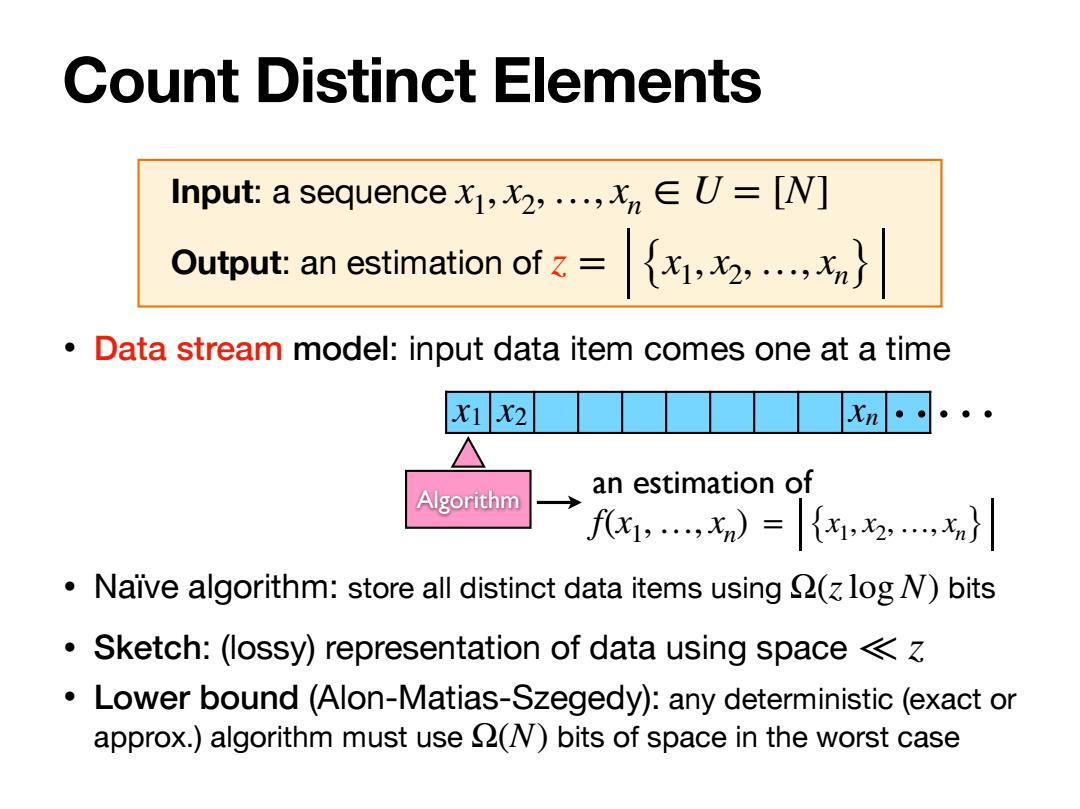正在加载图片...

Count Distinct Elements Input:a sequence,,...,=[N] Output:an estimation of= {x,,} Data stream model:input data item comes one at a time x12 Xn Algorithm an estimation of f,X)={,,,x} Naive algorithm:store all distinct data items using (log N)bits Sketch:(lossy)representation of data using space Lower bound (Alon-Matias-Szegedy):any deterministic(exact or approx.)algorithm must use (N)bits of space in the worst caseCount Distinct Elements Input: a sequence Output: an estimation of x1, x2,…, xn ∈ U = [N] z = {x1, x2, …, xn} • Data stream model: input data item comes one at a time • Naïve algorithm: store all distinct data items using bits • Sketch: (lossy) representation of data using space • Lower bound (Alon-Matias-Szegedy): any deterministic (exact or approx.) algorithm must use bits of space in the worst case Ω(zlog N) ≪ z Ω(N) x1 x2 xn Algorithm an estimation of f(x1,…, xn) = {x1, x2,…, xn}